
The Most Popular Flowering Trees in the US
by WillApse
The most popular flowering trees are popular with good reason. Find out which trees grow fast and offer beautiful blooms
There are many wonderful flowering trees available these days and new varieties are released every year. This selection should only be seen as food for thought as you start your quest for the perfect flowering tree.
Cherry Trees
If you are only going to plant one tree, perhaps in a small backyard, one of the best choices must be a Cherry tree. It has fantastic flowers in the spring and wonderful foliage in the summer. If you get a good variety for fruit, you can enjoy these in the Fall.
Choose sweet cherry trees for good eating fresh from the tree, sour cherry varieties for cooking or ornamental cherry their beauty. Some Cherry Trees are very large when fully grown- up to 70 feet. Some ornamental varieties are small enough to include in a small garden
Growing zones 5-9
More on Cherry Trees here: http://en.wikipedia.org/wiki/Cherry
Flowering Dogwood
This is one of the popular and widespread small flowering trees (up to 30 feet tall) in the US. It grows well in partial shade and is native in the Eastern and Central US from Maine to Florida and Kansas to Texas.
It has been popular in parks and around civic buildings as well as in backyards for hundreds of years.
It is not the fastest growing tree but you can expect about 16 feet after ten years.
Appalachian Spring is a popular cultivar with white flowers and red Fall foliage. It is resistant to the common problem of Dogwood Disease.
Growing Zone: 5-9
Crepe Myrtle
In a Southern climate these trees will flower almost continuously through the summer and give a great show in the fall as the leaves turn color.
They are smallish trees with a maximum height of 25 feet. They love full sun and can be a great shade tree for more delicate shrubs and annuals in a flower bed.
Growing Zones 7 to 9.
More on Crape Myrtle: usna.usda.gov/crapemyrtlefaq2.html
Magnolia
The huge creamy flowers of the Magnolia look as if they have been hand made by angels. The lemon scent is fresh and can make any evening walk special.
The foliage is distinctive and elegant. Insects find it a tough plant to attack and so it usually looks perfect.
A Magnolia can flower right through spring and summer but the blooms are at their best in spring.
Older specimens can be tall at between 30 and 70 feet so always plant where there will be room for them to reach their full potential. They are hard to move once established. They can do well in partial shade but prefer full sun.
Magnolias are at their most majestic in the American South but there are cold hardy varieties such as Edith Bogue.
More on Magnolia: southernliving.com/magnolia-trees
Crabapple
The name might not appeal but the brilliant spring show of flowers certainly will. Often they drape the entire tree and hide the branches from view.
As the flowers die back the leaves appear and later the attractive red and green fruits. If you are lucky, these will persist long into winter.
Crab apple are usually small trees but can reach heights of 25 feet in the right location.
The Japanese Flowering Crab has an especially stunning display in Spring. They like plenty of sun.
Growing Zones 4 to 8.
Ornamental Pears
While Cherry Trees and Crabapples are the most famous spring flowering trees, an ornamental pear can be a wonderful messenger that winter is over.
The Callery Pear tree, for example, is fast growing, likes all kinds of soils and has a mass of white flowers in spring. The Fall show of deep purple leaves will add color at a time when you most appreciate it.
The small fruit persist into winter. It grows to a height of around thirty feet.
Growing zones: 5-8
Bradford Pear trees are another popular variety: emmitsburg.net/gardens//bradford_pears.htm
The Linden Tree (Tilia)
This is a fast growing tree with dense leaves that offer great shade. The mass of flowers that appear in summer are heavily scented.
The tree is larger than most other kinds of tree on this page (66 to 130 feet) with a big root structure. It needs plenty of room but can bring protection from sun and wind to a large area.
Linden trees are popular as landscaping trees but they drop a steady stream of syrup that can coat cars in a sticky mess so don't use near parking areas.
Growing Zone 2-8
Likes full sun
Growing Zones
Growing zones are often called Hardiness zones. You can discover the growing or hardiness zone for any zip code here: http://www.garden.org/zipzone/
You might also like
My Successful Search for Edible LandscapingMany years ago, I went on a quest to find the best edible landscaping for Flo...
White Snakeroot - A Versatile and Little-Known WildflowerWhite snakeroot, Ageratina altissima, is a wildflower native to Eastern North...
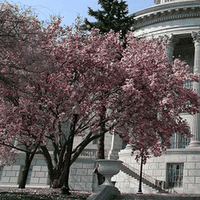

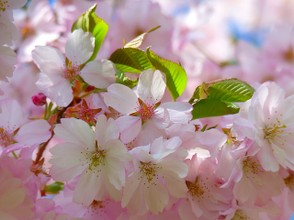
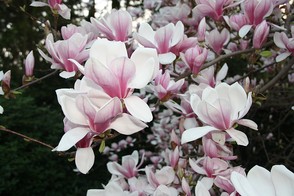
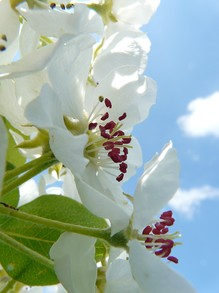

 The 10 Best HTC ONE X Cases and Coverson 07/19/2012
The 10 Best HTC ONE X Cases and Coverson 07/19/2012
 The 10 Best Google Nexus 7 Covers, Cases and Screen Protectorson 07/17/2012
The 10 Best Google Nexus 7 Covers, Cases and Screen Protectorson 07/17/2012
 The Best Samsung Galaxy S3 External Battery Juice Packson 06/18/2012
The Best Samsung Galaxy S3 External Battery Juice Packson 06/18/2012
 Samsung Galaxy Nexus External Battery Backups- 5 Juice Packs that Deliveron 01/09/2012
Samsung Galaxy Nexus External Battery Backups- 5 Juice Packs that Deliveron 01/09/2012
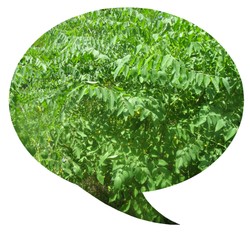
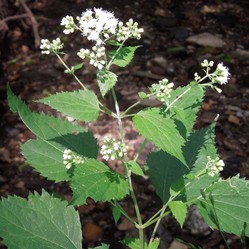
Comments